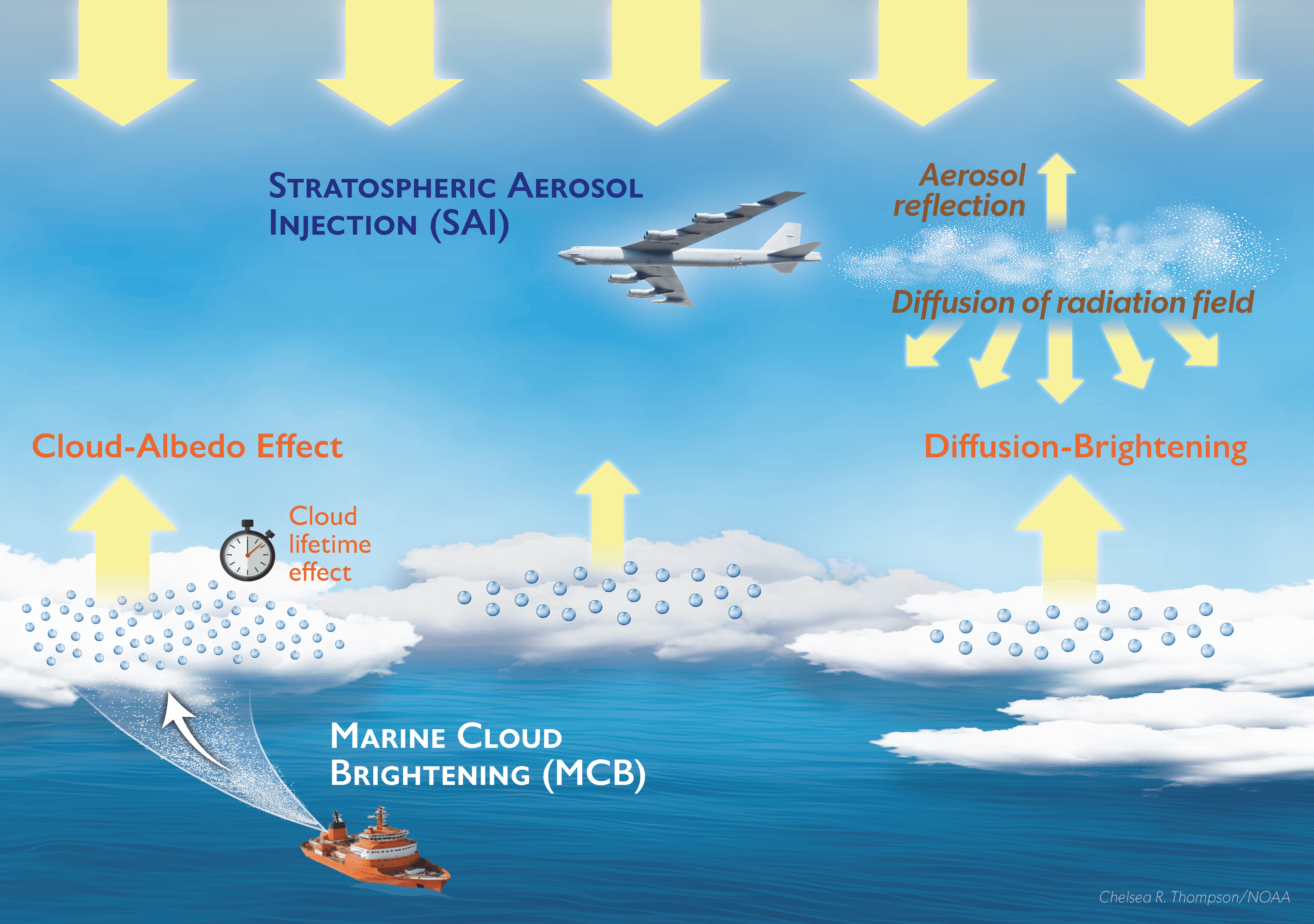Potential climate intervention technique could have a larger cooling effect than previously thought
Stratospheric aerosol injection would also brighten marine clouds in some areas, leading to more cooling

A method of intentionally cooling Earth’s surface to combat human-caused climate change could be more effective than scientists previously thought, according to new CIRES-led research.
Stratospheric aerosol injection (SAI) involves using aircraft to disperse microscopic particles throughout Earth’s stratosphere, where they would reflect a small portion of sunlight back into space and cool Earth’s surface. A new modeling study led by Jake Gristey, a CIRES scientist in NOAA’s Chemical Sciences Laboratory, finds the cooling effect of SAI would be enhanced if it were conducted over a region with cloud cover.
The results of Gristey’s model, published last week in Geophysical Research Letters, suggest SAI would also brighten marine clouds and make them about 10 percent more reflective. Scientists have also explored brightening marine clouds directly as a climate intervention method.
Since clouds cover around two-thirds of the Earth at any given time, extra cooling from SAI would be a likely scenario. In practical terms, this means implementing SAI would lead to bonus cooling that could substantially increase its overall effectiveness.
“This effect, which we called diffusion-brightening, could increase the reflection of sunlight from a cloud by as much as 10 percent, which is much larger than we anticipated,” Gristey said.

Climate intervention techniques
A diagram of how injecting aerosols into Earth’s stratosphere to cool the climate would inadvertently brighten marine clouds, enhancing the method’s cooling effect. Credit: Chelsea Thompson/NOAA CSL.
The effect turned out to be large enough that Gristey initially thought something must be wrong with his computer model code. After carefully double-checking his calculations and reproducing similar results with slightly different model set-ups, Gristey said, he realized he could be onto something.
SAI is considered to be the most viable approach to climate intervention, but its impact on cloud brightness had not been directly examined. Following an informal discussion with fellow NOAA scientists about potential connections between SAI and marine cloud brightening, Gristey was inspired to do some initial model calculations out of pure curiosity.
He used an energy transfer model to simulate the scattering direction and path traveled by individual solar photons after hitting cloud droplets within a “theoretical” cloud. By varying the angle of the incoming photons, he was able to determine a very strong relationship between the incidence angle and the depth that photons were able to travel into a cloud.
Essentially, the deeper a photon travels into a cloud, the less likely it is to get turned around and reflected back upwards, and photons striking a cloud directly at a 90-degree angle will penetrate twice as deep as a photon hitting at a 60-degree angle.
“As any experienced marksman or boxer can tell you, if you strike something at a glancing angle, it’s far more likely to simply deflect or ricochet away. The same is true for a photon,” Gristey explained.
Next, he zoomed out and used a two-dimensional model to simulate an idealized SAI scenario in which a layer of uniform aerosols is dispersed evenly into the stratosphere about 12 miles above a marine cloud deck. Without the aerosol layer, the sunlight hitting the cloud deck is almost entirely direct with only 6.4 percent diffuse radiation; with the aerosol layer, this drastically increases to 59.1 percent diffuse radiation.
The resulting increase in cloud reflectivity means that if SAI were to be deployed above a region with cloud cover, diffusion-brightening could actually provide a larger cooling effect than the stratospheric aerosols themselves.
“Our assessment of diffusion-brightening has profound implications because evaluating any potential implementation of solar radiation management requires a complete understanding of knock-on effects like these across the entire Earth system,” said Graham Feingold, a CIRES Fellow and co-author of the study.
At the direction of Congress, NOAA is leading a multi-year research program to investigate, detect, monitor, and assess natural, inadvertent, or intentional events that would alter the Earth’s radiation budget by increasing the reflectivity of the stratosphere or marine clouds. NOAA does not condone or endorse any climate intervention approach or technique. NOAA is not conducting outdoor experiments or planning for outdoor experiments.